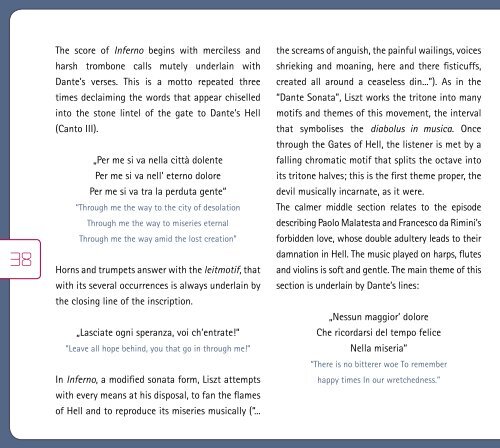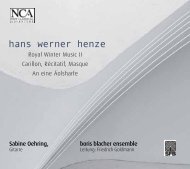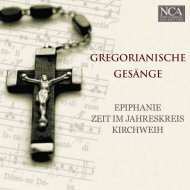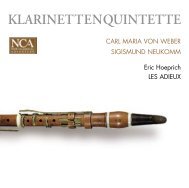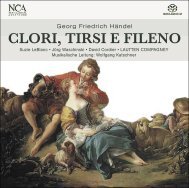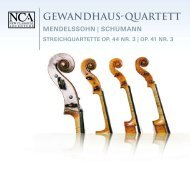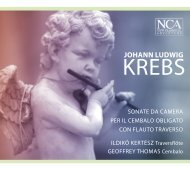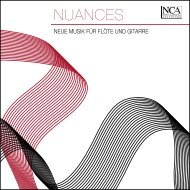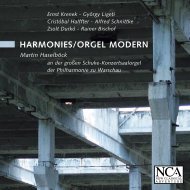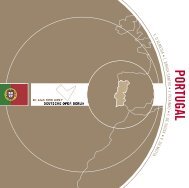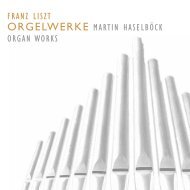FRANZ LISZT - nca - new classical adventure
FRANZ LISZT - nca - new classical adventure
FRANZ LISZT - nca - new classical adventure
Create successful ePaper yourself
Turn your PDF publications into a flip-book with our unique Google optimized e-Paper software.
The score of Inferno begins with merciless and<br />
harsh trombone calls mutely underlain with<br />
Dante’s verses. This is a motto repeated three<br />
times declaiming the words that appear chiselled<br />
into the stone lintel of the gate to Dante’s Hell<br />
(Canto III).<br />
„Per me si va nella città dolente<br />
Per me si va nell’ eterno dolore<br />
Per me si va tra la perduta gente“<br />
“Through me the way to the city of desolation<br />
Through me the way to miseries eternal<br />
Through me the way amid the lost creation”<br />
38 39<br />
Horns and trumpets answer with the leitmotif, that<br />
with its several occurrences is always underlain by<br />
the closing line of the inscription.<br />
„Lasciate ogni speranza, voi ch’entrate!“<br />
“Leave all hope behind, you that go in through me!”<br />
In Inferno, a modified sonata form, Liszt attempts<br />
with every means at his disposal, to fan the flames<br />
of Hell and to reproduce its miseries musically (“...<br />
the screams of anguish, the painful wailings, voices<br />
shrieking and moaning, here and there fisticuffs,<br />
created all around a ceaseless din...”). As in the<br />
“Dante Sonata”, Liszt works the tritone into many<br />
motifs and themes of this movement, the interval<br />
that symbolises the diabolus in musica. Once<br />
through the Gates of Hell, the listener is met by a<br />
falling chromatic motif that splits the octave into<br />
its tritone halves; this is the first theme proper, the<br />
devil musically i<strong>nca</strong>rnate, as it were.<br />
The calmer middle section relates to the episode<br />
describing Paolo Malatesta and Francesco da Rimini’s<br />
forbidden love, whose double adultery leads to their<br />
damnation in Hell. The music played on harps, flutes<br />
and violins is soft and gentle. The main theme of this<br />
section is underlain by Dante’s lines:<br />
„Nessun maggior’ dolore<br />
Che ricordarsi del tempo felice<br />
Nella miseria“<br />
“There is no bitterer woe To remember<br />
happy times In our wretchedness.”<br />
The third section takes up the flow of the first,<br />
but now with increased violence. Liszt indicates in<br />
the score at this point: “The whole of this passage<br />
perceived as a vicious derision.” At the end of the<br />
movement one of the tritone themes is presented six<br />
times, alluding to the last verse of Dante’s Inferno,<br />
where Vergil and Dante catch sight of Lucifer’s six<br />
eyes. The movement closes with a repeat of the<br />
“Lasciate ogni speranza”.<br />
The second movement, Purgatorio, takes up<br />
the mood of the middle section of the first: “A<br />
wonderfully soft whisper that quietens the mind and<br />
permits us to dream of the sea in eternal clarity”,<br />
was Richard Pohl’s fitting description, which with<br />
Liszt’s permission appeared in the score. The central<br />
lamentoso part begins with a fugue whose theme<br />
is based very successfully and aptly on the ‘Paolo<br />
and Francesca’ episode from the first movement.<br />
The section is accompanied by quasi-recitative<br />
elements, sighing motifs, and chorale-like passages<br />
that symbolise the lamenting of the penitent.<br />
The second movement flows without a break into<br />
the closing Magnificat, the heavenly choir. Of the<br />
Latin text only two verses are set, beginning with<br />
a sequences based on the Gregorian chant Crux<br />
fidelis that Liszt often used as a tonal symbol of<br />
the cross: Magnificat anima mea Dominum / Et<br />
exultavit spiritus meus in Deo salutari meo, and<br />
culminating in the closing, ethereal exclamations<br />
of “Hosanna” and “Hallelujah”. The chorus ends with<br />
an astonishing succession of rising major triads,<br />
most likely symbolising the stairway to heaven,<br />
that resolves itself through a descending whole-<br />
tone scale. Liszt made use of this procedure at the<br />
end of his “Dante Sonata”, but here he extends<br />
it considerably and expands the passage over a<br />
complete octave. A second, triumphant fortissimo<br />
ending that can be played ad libitum or omitted, is<br />
added to the ethereal pianissimo possibile.<br />
ÉVOCATION À LA CHAPELLE SIXTINE<br />
When Liszt moved to Rome in 1861 he was<br />
overwhelmed by the musical impressions he<br />
received, now being at the centre of Catholic church<br />
music. Every Sunday he used to visit the Sistine<br />
Chapel, to be immersed in the sounds of Palestrina’s<br />
english


